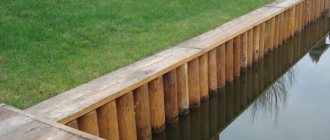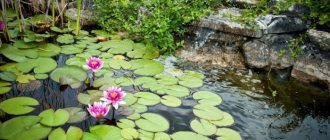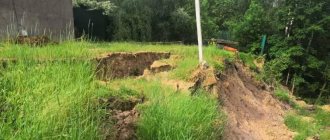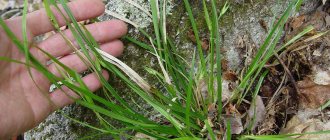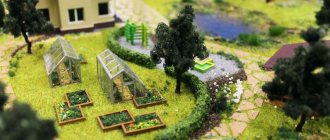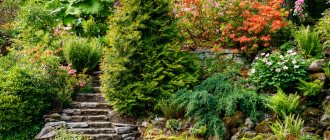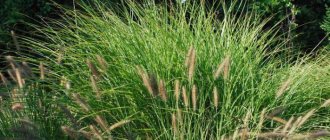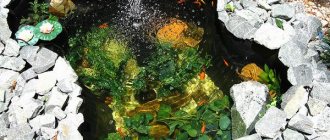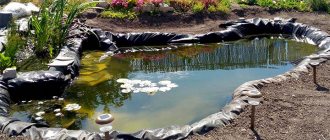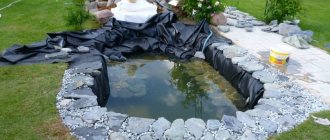How to strengthen a river bank with your own hands? Many people who have a dacha or house located near water (this could be, for example, a river, an area near a pond, lake or reservoir) ask this question.
River banks tend to collapse over time, so they need to be strengthened, otherwise, sooner or later, a collapse of any building may occur.
They strengthen the banks mainly before construction and in places where there are frequent landslides, because your things can go under water along with the ground.
Why and in what cases is bank protection carried out?
As a rule, bank protection of a river or pond combines a set of works that help strengthen the coastline and help protect the coastal line of a natural or artificial reservoir from washouts, landslides and erosion.
The destruction of the coastal slope can be caused by currents and waves, as well as erosion as a result of the negative impact of storm flows.
Erosion and subsidence of the banks often provokes shallowing and overgrowth , not only of the reservoir itself, but also of the surrounding areas. This puts all structures and structures erected in the coastal zone at risk of collapse. To prevent such undesirable processes, bank protection is carried out.
Timing of bank protection works
To avoid negative consequences, shore strengthening should be carried out on time:
Strengthening measures are best carried out from late spring to early autumn, when the weather is consistently dry and there is no prolonged heavy rainfall. Winter is the worst time to carry out work: after the snow thaws, the fastening materials may shift, so everything will need to be redone.
Options for strengthening the shoreline of a pond and river
You can strengthen the shore in several ways and using different materials, which differ in quality characteristics, durability and cost:
- a reinforcing system with a flexible design, represented by gratings in the form of bases for retaining walls, which allows for reliable protection for communications laid along the shore;
- strengthening system using plant components, including larch wood, which has increased resistance to soaking and rotting processes;
- a strengthening system with a rigid structure in the form of steel or PVC sheets, retaining walls, cemented soil or concreted stones.
Before carrying out the activity, it is necessary to assess the amount of work and select the best option.
Mesh reinforcement
Chain-link or twisted mesh, often used as a façade mesh, is also quite suitable for strengthening gently sloping banks.
Its design with movable cells stretches well. This quality is indispensable for moving soils where landslides are possible. The rolled material is spread along the shore, bringing the edge 20–50 cm into the water. The mesh is secured on top and along the perimeter with reinforcement or wooden stakes. The cells can be filled with simple soil or stone can be placed in them (ruble, tumbled, crushed stone, pebbles). Even ordinary soil with plant seeds fixes the mesh quite reliably. After just a month, you can remove the fastenings.
It is better to use a galvanized metal mesh; in direct contact with water it will last longer. The size of the cells depends on the backfill material; if it is stones, the largest of them should fit freely inside.
How to strengthen a river bank with a larch log (video)
Bank protection with gabions
Work with gabions is easy to perform and economical. The advantages of using such material are as follows:
- the material is able to effectively withstand the onslaught of waves and active water flows;
- has a long service life exceeding one hundred years;
- low installation costs and the ability to dismantle if necessary;
- The finished design is environmentally friendly and decorative.
It is very easy to carry out such a design yourself, but it is advisable to adhere to the following simple installation rules:
- the gabion structure must be mounted on the problem area and filled with natural stone;
- the total number of gabions, as well as the method of their installation, must be calculated individually and depend on the height of the slope;
- at the final stage, protective decorative finishing is performed by filling it with soil and plant seeds, which strengthen the structure.
The maximum strength of the gabion system is achieved after five years of operation. During this time, the coastline is able to become one with the adjacent landscape.
Strengthening the river bankline with wooden piles
This method falls into the category of fairly common methods. The cost of installation with wooden piles will directly depend on the quality and value of the wood used in the work.
The advantages of the method include the ability to perform work without special skills, environmental friendliness of the material and a fairly attractive appearance of the structure. However, wood has a relatively short service life, and such strengthening requires a lot of labor.
We strengthen the banks with PVC sheet piles
You can even reinforce a steep bank with PVC-based tongue and groove. This method is considered to be the most rapidly erected and the most cost-effective. Most often used on very steep or steep banks.
The implementation technology consists of connecting sheet piles into a single protective wall. Installation is carried out using special hydraulic equipment, and for reliability and durability, the piles are fixed as firmly as possible using longitudinal ribs.
Application of natural stone
If the shoreline of a reservoir has a slope of no more than 20º, then natural stone in the form of pebbles, rubble or boulders of various shapes and sizes can be used for strengthening. This material allows you to give the landscape an attractive and unique appearance. The bottles of various sizes and colors look especially impressive.
The most commonly used stones are pink, red, gray and dark rubble. Before installation, it is necessary to carry out a number of preparatory measures aimed at creating a base of geotextiles, geogrids or geogrids.
The most difficult is considered to be the arrangement of the so-called “stone castle”, which is a dense placement of large boulders in a strictly designated place in accordance with the shape of the stone and its color. This event is carried out manually, which allows you to adjust the aesthetics of the appearance. Despite the fact that this process is very long and labor-intensive, the result is a durable and most attractive reinforcement.
How to strengthen the bank with gabions (video)
Geogrid and reinforcing mesh
The use of geogrid is an inexpensive and reliable option, especially if the coastline is receding. A distinctive feature of the method is the ability to obtain a very beautiful and individual appearance of the structure, as well as a convenient, completely non-slip descent to the water and access to the shore.
A good visual effect is achieved by filling the cells with river or sea pebbles , as well as marble chips in the form of a mosaic. Strengthening the shore using a special chain mail reinforcing mesh and tumbled or rubble stone looks no less impressive, and is also characterized by extraordinary reliability and durability.
How to strengthen a bank with your own hands using plants
The use of various biological objects and elements of plant origin along the water's edge is one of the most troublesome and capricious methods of bank protection of both a natural pond and an artificial reservoir. Plants used:
- fast-growing willow easily withstands prolonged flooding;
- the powerful root system of ash is resistant to strong gusts of wind and low temperatures, so the plant grows well in open areas;
- reeds and sedges not only help strengthen the coastline, but also prevent clogging and shallowing of the reservoir;
- Alder, which has bank-strengthening and water-regulating properties, is of great soil-protective importance;
- Hazel is widely used to secure slopes and beams, and fallen leaves are perfectly mineralized and enrich the soil layers;
- in order to improve the structural parameters of the soil and prevent sloshing, bird cherry is widely used;
- Ailanthus, which produces abundant root shoots, is used to protect slopes, embankments and ravines from shedding and sliding.
A good and fairly quick strengthening effect can be achieved by growing such popular coastal plants as iris, loosestrife, water mint and comb or tamarisk.
Additional events
These will include an artificial increase in vegetation, because the more roots there are, the denser your fortification.
To do this, you will need to purchase seeds of perennial grasses or small trees and simply sow as densely as possible on the top of the bank and, if possible, on steep slopes.
The second stage will be decorating the shore. If the shore is sandy, then you can simply bury the visible parts of the coconut mat, and if it is grassy, then you can add more stones or earth - this will create additional strength and ensure the beauty of the entire shore.
There are many advantages of using coconut mat, here are the main ones:
- The material is environmentally friendly, because it consists exclusively of natural elements.
- Cheapness is one of the main parameters if you need to cover large areas.
- The installation work is very simple, even one person can handle it within a few hours.
- For several years the slope will not erode or slide.
- The mesh structure allows plant roots to pass through it, which will provide additional strength.
- The strength of the material is not lost from sunlight, contact with water and from the decomposition of natural organic matter.
As you can see, your problem with landslides from constant contact with water can be solved very quickly with the help of your hands, because no additional knowledge is required. In addition, there will be no need to spend a lot of money or obtain permits from government authorities.
By spending only a couple of hours of your time, you will forget about the problem for 2-3 years, or maybe more, because if there is a lot of vegetation on the shore, it will create tangles of roots and its own mesh, which will continue to hold the shore after the decomposition of the coconut mat. Also, after a couple of weeks, no one will be able to guess that the bank is reinforced, because the material will no longer be noticeable.
How to strengthen a steep bank
It is the steep coastline that quite often needs timely and competently executed strengthening to prevent flooding of the adjacent territory and the soil from sliding into the water of the reservoir. Such coastal fortifications can be carefully and reliably designed not only with capital options, but also with decorative methods:
- using gabion-box structural systems made on the basis of the strongest and very durable galvanized double-twisted wire mesh;
- when combining gabion systems with strengthening of the coastal zone using larch or geogrid, the service life is more than eight decades;
- the use of Renov mattresses in the form of flat gabion structures made of metal mesh with double torsion and galvanized or polymer coating;
- through Siberian larch, which is characterized by excellent durability and natural properties, which does not allow disruption of the ecological system of the reservoir;
- sheet piling partitions in the form of steel sheets, as well as reinforced concrete structures, PVC and wood with high load-bearing capacity.
It is quite popular and in demand in our country to strengthen the coastline with cemented soils consisting of M-300 or M-400 cement, loam or loess-like sandy loam and water, thoroughly mixed and placed in wooden, metal or plastic formwork.
Correct assessment of the situation
Strengthening the banks of a pond with your own hands is a doable task. But the success of the event directly depends on how correctly the method of eliminating the problem was chosen and implemented. The choice, in turn, depends on an objective assessment of the situation. For this purpose, several points are clarified:
- shore soil type;
- slope angle;
- collapse occurs above or below the water level;
- when did the first signs of a problem with the coastline appear;
- based on the data obtained, it is necessary to estimate the rate of destruction;
- make a forecast and decide whether there is enough time to prepare for the implementation of methods for thoroughly strengthening the coast or whether it is necessary to act as quickly as possible.
After clarifying the situation, they get acquainted with information about ways to solve it, and choose the most acceptable one for themselves.
Characteristic
PVC tongue and groove is a profile element made from the same polyvinyl chloride. Its important feature is the rounded edges on the side walls. As experts say, grooves or locks are placed there. It is possible to connect pairs and even more structures. Such a product is in wide demand in domestic and foreign practice.
Sheet piling products are one of the most promising types of structures in their niche. They are quite durable. Among the most important characteristics, experts name:
- resistance to minor mechanical deformation;
- resistance to ultraviolet rays;
- low susceptibility to fire;
- the tightness of the walls being tied together using a lock;
- no need for engineering maintenance;
- Suitable for installation on natural coastlines without complex landscaping and tedious preparation.
It is also necessary to understand that the professionalism of the performers plays a big role here. If handled carelessly, the likelihood of problems arising will be very high even with such a good solution. For PVC tongue and groove sheets, GOST 57942, adopted in 2022, applies.
According to him:
- locks can be an integral part of the product or its separate part;
- production of products can be carried out using winding, pultrusion or infusion methods;
- the products are divided into trough, z-tub and tubular formats;
- The appearance of burrs and split areas, violations of smoothness and perpendicularity at the ends is not allowed;
- Deformation of the inner layer of such products, the appearance of dents and sagging of various kinds (with the exception of formations no larger than 3 mm) are not allowed.
